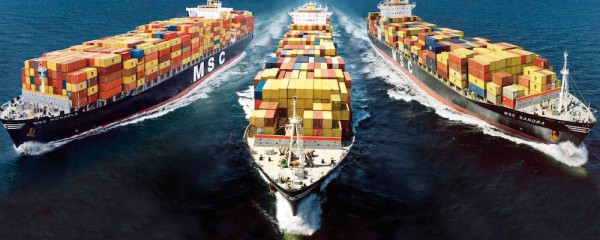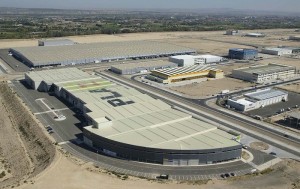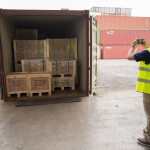THE POWER OF LOGISTICS CLUSTERS
TGIF! Hello readers  … Have you ever heard of logistics clusters? For those who haven’t heard about what this powerful strategy is, logistics clusters is sets of logistics activities that co-locate and concentrate in particular locations. Logistics clusters is popularized by MIT professor : Yossi Sheffi. Let’s find out more about this topic!
… Have you ever heard of logistics clusters? For those who haven’t heard about what this powerful strategy is, logistics clusters is sets of logistics activities that co-locate and concentrate in particular locations. Logistics clusters is popularized by MIT professor : Yossi Sheffi. Let’s find out more about this topic!
Logistics Clusters in a Nutshell
In his explanation, Yossi Sheffi tells us how distribution centers are becoming much more than the places where goods are unloaded from boats and planes onto trucks and trains. With some government help, they often evolve into thriving sources of innovation.
“Like other clusters, logistics clusters enable tacit information exchange between companies and attract specialized labor and supplies, thereby improving efficiency and competition and making it easier to start new companies,” says Sheffi. “Yet logistics clusters have many additional benefits.” These include low transportation costs, high transportation service level, and a broad, stable base of non-offshoreable regional jobs, and also a wide range of complementary economic activity in repairs, maintenance, packaging, and manufacturing.
Logistics Clusters Analysis
Logistics operations pile in certain cities or regions, not only to take advantage of geography, but also to enjoy the benefits that quickly arise from consolidation. “With clusters, transportation companies can deploy larger airplanes, trucks, and trains, thereby bringing down costs,” quotes Sheffi. “As more companies join the cluster, the level of service provided by the transportation carriers goes up. There’s a higher frequency of service, and more service to further locations.”
Logistics clusters can improve economic growth over a broader economic spectrum than do high-tech and innovation clusters like Wall Street, Hollywood, and Silicon Valley. “The average salaries in the logistics industry are similar to those in manufacturing, and they help people at the bottom of the ladder, not just highly trained experts and engineers,” Sheffi says. “In logistics, it is common for people to start out by moving boxes and driving trucks and forklifts, and end up in senior management.”
The working-class nature of the industry is reflected in the executive suite. “In distribution companies like UPS, the lion’s share of top executives started on the floor,” Sheffi says. “People tend to stay within the industry, so it has an element of moving people out of menial jobs to the middle class.”
Another benefit of logistics clusters is to generate new jobs beyond logistics. As freight is distributed through these hubs, “you have people handling repair, maintenance, tagging, packaging — a whole range of activities.”

In many cases, manufacturers set up operations near logistics clusters to exploit reduced time and high level of transportation service. Sheffi mentions Indianapolis as a logistics cluster that evolved into a manufacturing subcluster.
In the U.S. right now, the high cost of fuel has encouraged the siting of manufacturing facilities near logistics clusters. 3-D printing and product customization also favor placing manufacturing closer to the edges of the distribution network.
Beyond Geography
Geography is definitely an important thing to establish a successful logistics cluster, but it doesn’t stop there. “Most logistics clusters are located at the intersection of a number of different shipping routes, but geography itself does not make it preordained,” Sheffi says. “There are places that should have become logistics clusters but did not. Port Said, at the mouth of the Suez Canal, sees thousands of ships pass by every year, but they don’t stop. Port Said could have been the major point of distribution for much of Europe, but the Egyptians didn’t get their act together.”
Besides, Sheffi adds, the Spanish city of Zaragoza hosts the largest logistics park in Europe, yet it is “a small city, with no big airport, and it doesn’t even lie next to a port,” Sheffi says. Knowing this weaknesses, Zaragoza was on its way to becoming a logistics success a little over a decade ago. Under Sheffi’s direction, MIT’s Center for Transportation & Logistics chose Zaragoza as a location for one of the first research and education centers in its Global SCALE (Supply Chain and Logistics Excellence) Network, dedicated to the development of supply chain and logistics excellence through innovation. The CTL supply chain research has furthered Zaragoza’s logistics success.
Zaragoza City
Zaragoza Logistics Center
Intrigued by how this relative bayou rose to the top of the supply chain, Sheffi set about exploring what Zaragoza and other successful “super clusters” such as Rotterdam, Singapore, Miami, Memphis, and Los Angeles had in common. Yes, most of the successful clusters enjoyed geographic benefits, but there are some other advantages too, such as a strong communications infrastructure, capable financial services, and a stable, supportive government. In particular, a strong public-private partnership was key to the Zaragoza story.
“Government investment in physical infrastructure, free trade zones, trade policies, land zoning, and a general good business climate are common to all the best clusters,” Sheffi says. “The regions also need the right culture. A history and culture of trading is also important. Logistics involves people from around the world.”
“Opportunities multiply as they are seized – English Proverbs”
Adopted from : MIT Edu



































